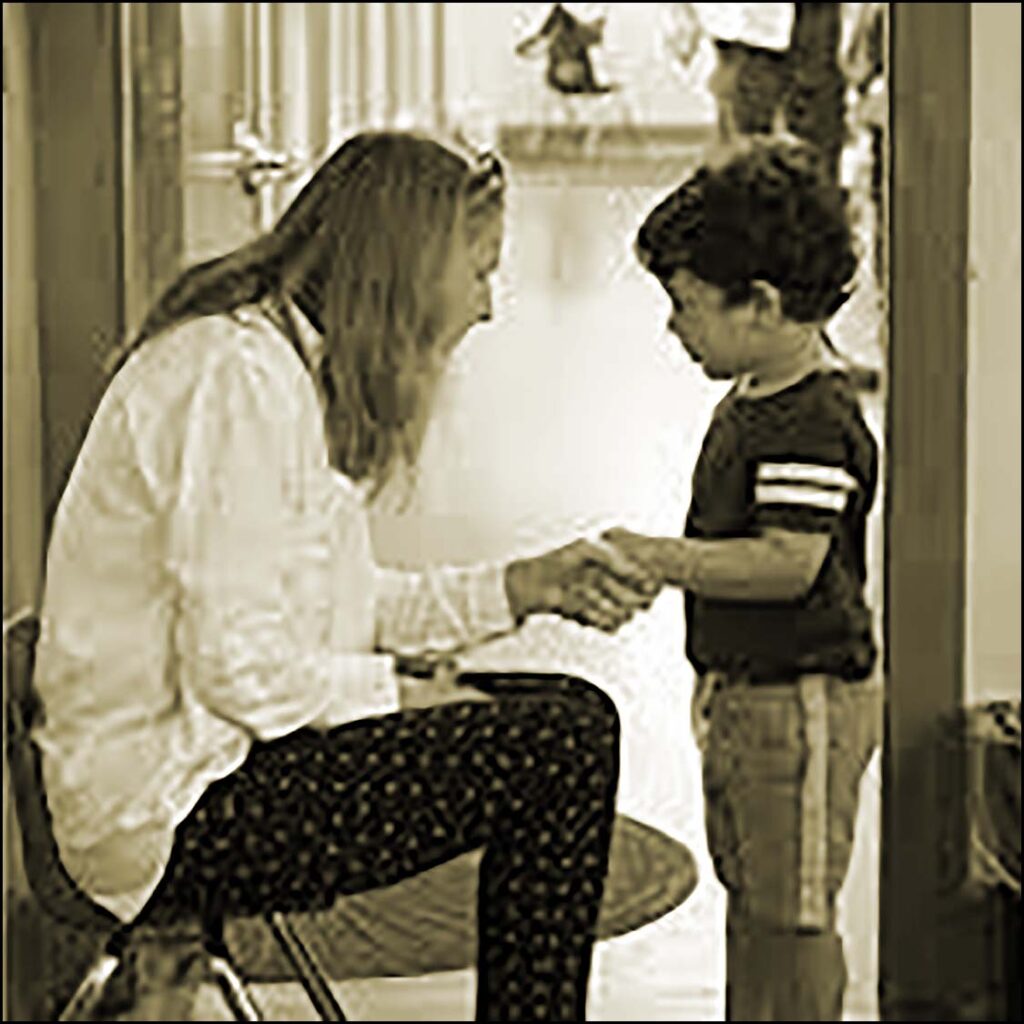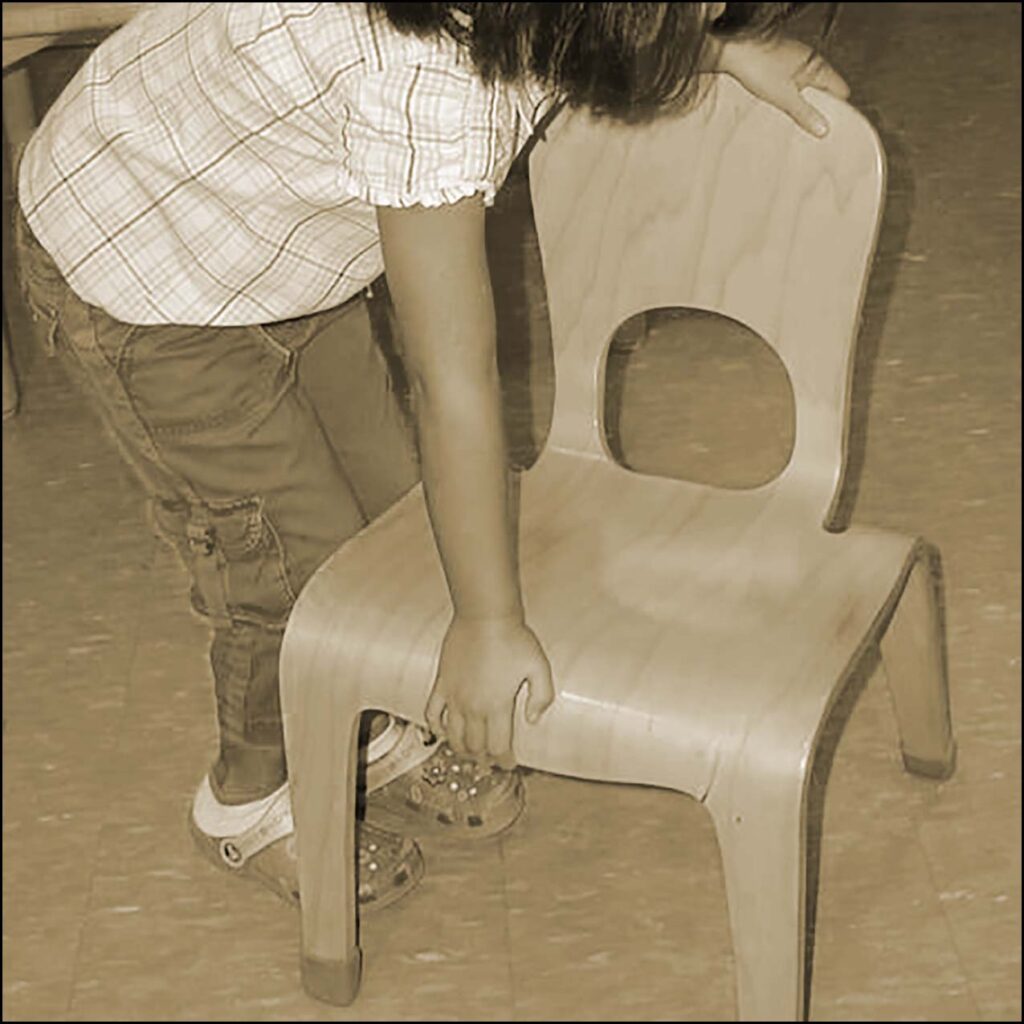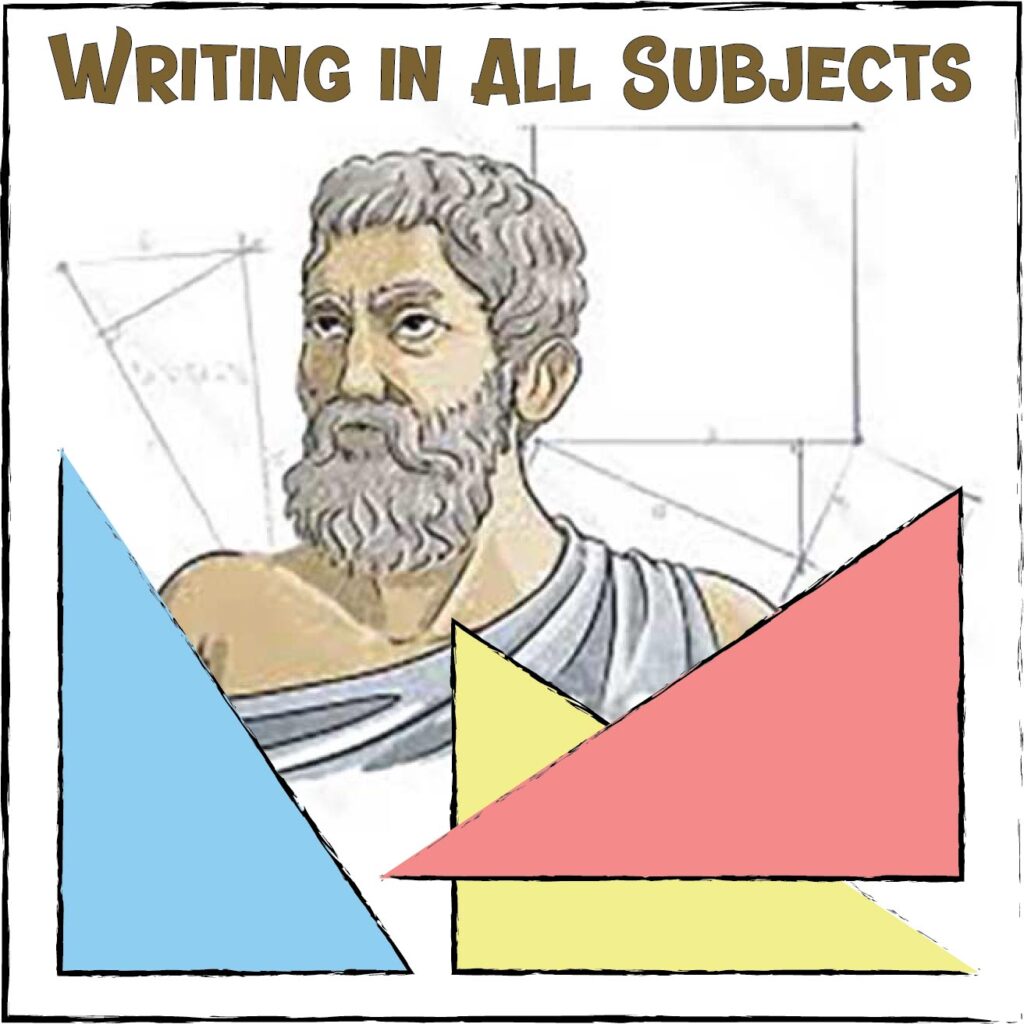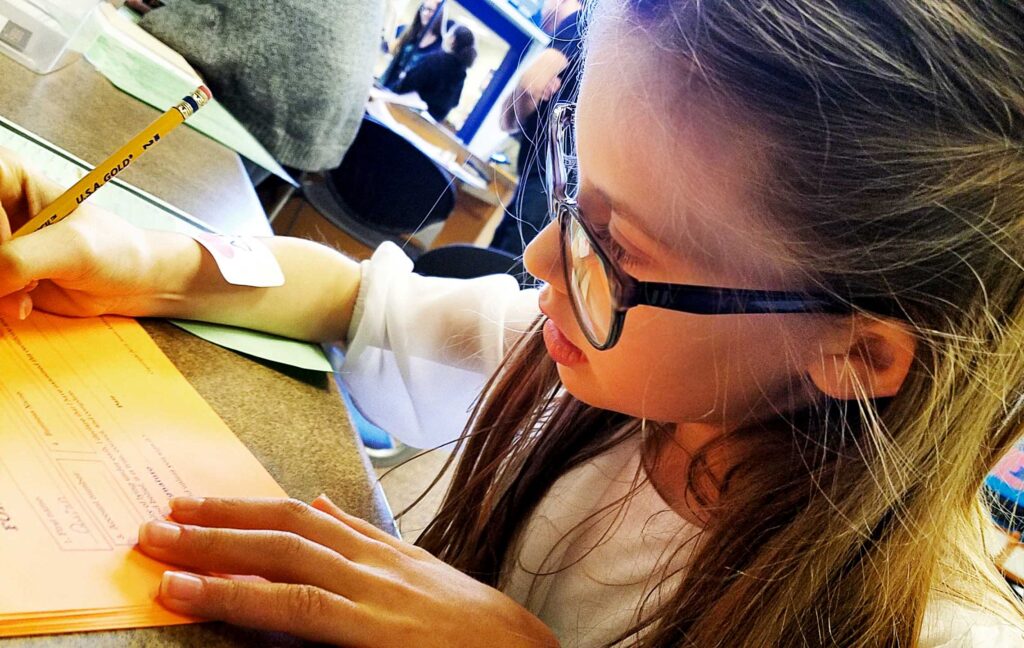Education today, in this particular social period, is assuming truly unlimited importance. And the increased emphasis on its practical value can be summed up in one sentence: Education is the best weapon for peace.
– Dr. Maria Montessori (Education & Peace, p.28)
Grace and Courtesy – What exactly does this term mean?
In the early childhood classrooms, very young students are entering their classroom for the first time this year. Being elementary trained, I’m learning more and more new things about primary education each and every day. When implemented correctly, the primary classroom is a magical place to be.
Grace and courtesy begins in the Casa dei Bambini/Children’s House, the name Dr. Maria Montessori gave to the primary classroom (3-6). It is the Classroom Management System designed by Dr. Maria Montessori. She believed education should function as an aid to life. Here’s why.
What Exactly is Early Childhood?
Early childhood, which includes children from 3-6 years old, goes by many names. Most of us (including myself) knew it as kindergarten. Kindergarten typically only means 5 years old. Sometimes, schools offer an early start program. Or, when I was a child, I remember being part of a half day K4 program.
Another term which might be used for early childhood is primary. In a Montessori classroom, primary classrooms are multi-grade classrooms consisting of children at the ages of 3, 4, and 5 years old. The K3s and K4s attend half days during the morning hours. The K5s – the traditional kindergarten aged children – stay and work with their primary guides throughout the remainder of the afternoon.

Managing multi-level classrooms creates unique challenges for Montessori guides. This year, those challenges were intensified. The majority of children started this school year having either forgotten or never having been taught classroom and school expectations.
Making matters worse, a large portion of the school population returned to school having been traumatized by events occurring over the last 18 months.
Through classroom observations, I’ve noticed that those teachers who began the first three or four weeks of school heavily relying on grace and courtesy lessons seem now to be the classrooms bouncing back most quickly.
What Exactly is Grace and Courtesy?
Grace and courtesy is the Classroom Management System designed by Dr. Maria Montessori. Dr. Montessori believed education should function as an aid to life. In fact, she viewed this to be the ultimate goal of education, holding even greater importance than imparting knowledge.
Grace and courtesy can be described as lessons and discussions, occurring both one-on-one and in the whole group. Grace and courtesy lessons focus on aspects of our society and on our social interactions.
For these reasons, grace and courtesy lessons are ingrained and embedded in every activity within the Montessori classroom. Later on, we extend these early lessons outside of the classroom too. As adults, we can sometimes take these skills for granted. Because grace and courtesy is a natural part of every Montessori classroom activity, it is sometimes difficult for adults who are looking in to quickly identify.
In the primary, grace and courtesy activities are referred to as ‘practical life.’ Practical life includes many important lessons on life skills. Through practical life activities, children become independent and learn to care for their environment.
What are Examples of Grace and Courtesy?
Grace and courtesy lessons often focus on moving in a way socially acceptable within the environment. There are many activities and aspects of work designed to enhance the development of movement.
After the primary guide models the expected behavior, children are allowed to move freely throughout the room without disturbing others.
These lessons help children become socially aware and conscious of the world outside of themselves. It helps them to understand how their behavior might affect another person, or how they could even affect a whole community of others.

Some movement activities are designed to develop gross motor control or whole-body movements (i.e. walking the line, pulling out and pushing in the chair). They can also focus on fine motor skills or smaller, more precise movements (i.e. pouring, the pincer grip).
Why Movement Matters
Primary guides hope to refine children’s movement through practical life and grace and courtesy lessons. This could be showing a child the appropriate way to pull out and push in a chair or how to walk around classroom rugs.
Children are also shown how to carefully choose where they sit and whom they want to sit with. Asking someone to sit with them can be done with kindness and grace. Or, if never shown the proper way, it can be done in an insensitive way and it might even look like bullying.
Sensorial games can be played where a child has to remember something while moving from room to room. Moving activities can also be accompanied by music, which helps to train the memory. The silence game teaches children how to totally refrain from any movement at all. Who knew moving could be so complicated from the perspective of a child!
Why Adult Behavior Matters
Every adult within a school community serves as a role model to the children. This is why it is critical for every adult within a school environment to emphasize their own personal courtesy.
For example, adults must be mindful of their movements when entering and exiting classrooms. Their footsteps and voices should be quiet and their movements should be done with ease and model grace. Children at the earliest stages of development are the most receptive to these modeled behaviors. What they see is what they do.
Grace and Courtesy is Culturally Responsive, too!
Cultural responsiveness is ingrained and embedded within Dr. Montessori’s grace and courtesy lessons, too. Possessing some knowledge on the backgrounds and heritage of students in their classrooms, guides will conduct grace and courtesy activities in culturally appropriate ways. The particular grace and courtesy lessons given will help the children adapt to their culture.

As children get older, they will take these grace and courtesy lessons further. During the elementary years, they will become interested in the history behind these courtesies and in the history of their cultures.
A child will show interest in this when they are ready to understand it. Adults should not ‘force’ their readiness. Cultural activities and celebrations should develop organically and be led by the children.
Other grace and courtesy lessons might include: How to sit in a group (less hands, place and space); stopping and listening (ringing of the classroom bell); how to turn pages in a book; opening and closing doors; waiting to talk to teacher (hand on shoulder, the waiting chair); excusing oneself and leaving the group (i.e. going to the restroom); rolling rugs; folding cloths and aprons; offering snacks to others; shaking hands. The possibilities are endless!
Do you have more questions about Montessori Grace and Courtesy or Classroom Management Systems? Do you have a suggestion for another blog topic? Please send me an email with your ideas or experiences at grumble.services@gmail.com.
If you find this article helpful, please share it. Please join us, if you have yet to do so. Subscribe below and receive articles like this one in your email box weekly. Thank you!
Read More: Montessori Method:
It can be quite confusing to an outsider looking in.
All Rights Reserved • © 2022 Grumble Services LLC • grumbleservices.com

References and Read More:
Association Montessori Internationale
National Center for Montessori in the Public Sector
This blogpost was inspired by an AMI Montessori Training lecture, 2007.



